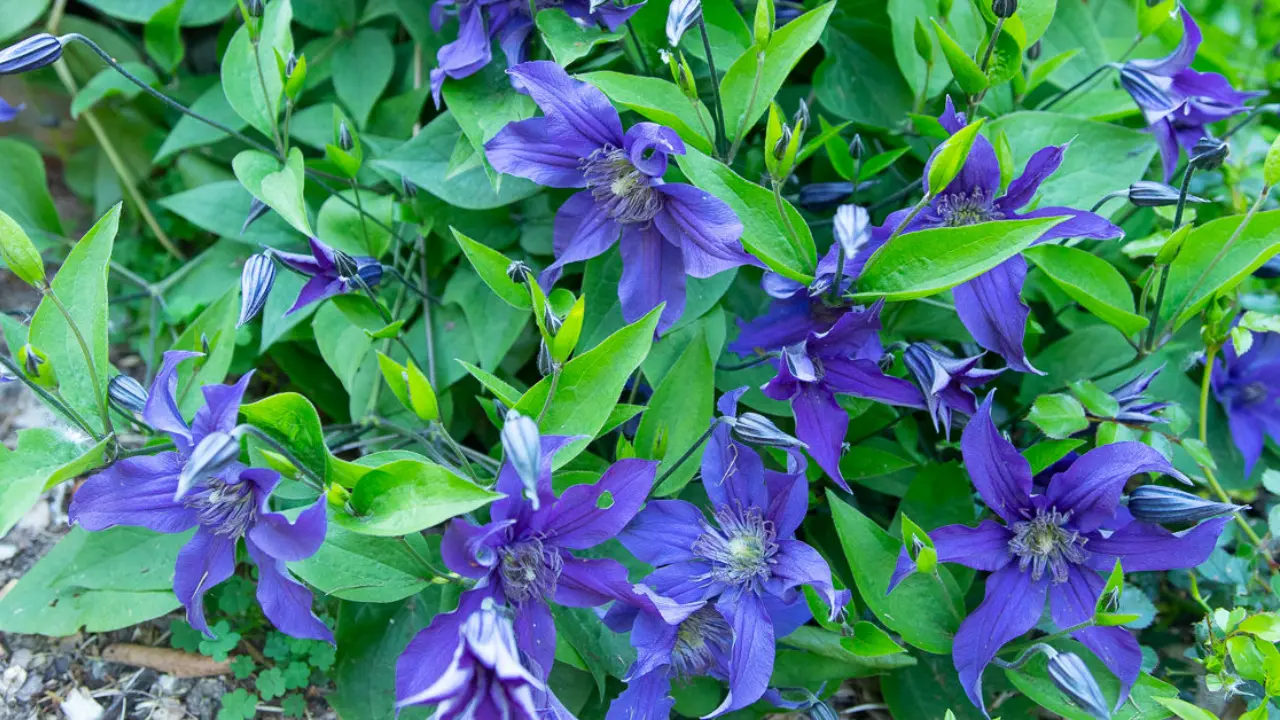Clematis is a lovely blooming vine that can offer elegance and beauty to any garden or environment. Clematis is a popular option among gardeners due to its brilliant and colorful blossoms. However, planting and cultivating clematis effectively takes considerable expertise and care. This article will walk you through the process of How to Plant and Grow Clematis so that you may enjoy the breathtaking beauty of this blooming vine in your own yard.
Introduction: Why Choose Clematis?
Clematis is a versatile and beautiful blooming vine that comes in a variety of colors, forms, and sizes. Its blooms may be solitary, double, or bell-shaped, and they range in color from white to pink to purple and red. You may easily select a clematis variation that meets your taste and garden design with over 300 species and various cultivars available.
Choosing the Right Clematis Variety
Consider flower color, bloom period, and growth habit when choosing a clematis variety. Popular cultivars include ‘Nelly Moser’ with enormous pink flowers, ‘Jackmanii’ with deep purple blossoms, and ‘Henryi’ with white flowers. Investigate many types to identify the ones that best suit your tastes and the growth circumstances in your location.
Selecting the Ideal Location
Although clematis prefers full sun, several types may tolerate moderate shade. Make sure the place you choose gets at least six hours of direct sunshine every day. The soil should be well-drained and organically rich. Avoid regions with strong clay soil or those are prone to flooding.
Preparing the Soil
It is important to adequately prepare the soil before growing clematis. Remove any weeds or grass from the planting area beforehand. To boost fertility and drainage, loosen the soil with a garden fork or tiller and incorporate compost or well-rotted manure. A soil pH of 6.0 to 7.0, which is slightly acidic to neutral, is ideal.
Planting Clematis
Create a hole twice the width and depth of the root ball. Insert the clematis plant into the hole, making sure the crown (the point at which the stems meet the roots) is level with or slightly below the soil surface. Backfill the hole with dirt, gradually firming it around the roots. After planting, water thoroughly to settle the soil.
Providing Proper Support
The majority of clematis cultivars are climbing vines that need help to thrive. Set up a trellis, arbor, or other strong structure near the planting area. Train the clematis stems to climb the support gradually as it develops. Excessive pushing or bending of the stems might result in injury.
Watering and Fertilizing
It requires constantly wet soil, but not soggy soil. Deeply water the plant once or twice a week, allowing enough water to reach the root zone. Mulching around the plant’s base may help conserve moisture and keep weeds at bay. Fertilize clematis using a balanced, slow-release fertilizer in early spring and again after the first bloom cycle.
Pruning Techniques
Pruning is vital for keeping clematis healthy and looking well. Pruning needs vary per variety and may be divided into three groups: Group 1, Group 2, and Group 3. Clematis in Group 1 blooms on old wood and needs little pruning, but Clematis in Groups 2 and 3 benefit from frequent pruning to foster new growth and many flowers.
Dealing with Pests and Diseases
It is subject to pests and diseases such as aphids, snails, powdery mildew, and wilt. Monitor your plants on a regular basis and take the necessary steps to manage and avoid pests. Pests may be kept at bay by utilizing organic pest management measures such as introducing beneficial insects or applying insecticidal soap.
Clematis Care in Winter
Grow Clematis becomes dormant throughout the winter. Apply a layer of mulch at the base of the plant to help insulate the roots and avoid frost heave. In places with hard winters, consider covering the plant with hessian or a frost blanket. Depending on the variety, pruning should be done in late winter or early spring.
Propagation Methods
Grow Clematis may be propagated using a variety of ways, including stem cuttings, layering, and seed sowing. Stem cuttings are a common and simple method of propagating clematis. Choose healthy, non-flowering stems and take the necessary actions to promote root growth. Layering is the practice of burying a section of a stem to promote root growth. Planting seeds needs patience and may take longer to grow.
Common Mistakes to Avoid
Avoid typical clematis blunders including planting too deep, overwatering, poor trimming, and failing to give appropriate support to promote optimal growth and flowering. It is important to learn the unique requirements of your selected clematis variety and to offer the appropriate care.
Conclusion
You may effectively plant and develop clematis in your yard if you follow the procedures suggested in this article. Remember to choose the appropriate type, give ideal growth conditions, and care for your plants all year. With Grow Clematis careful care and maintenance, your clematis will reward you with copious flowers and a colorful spectacle.
